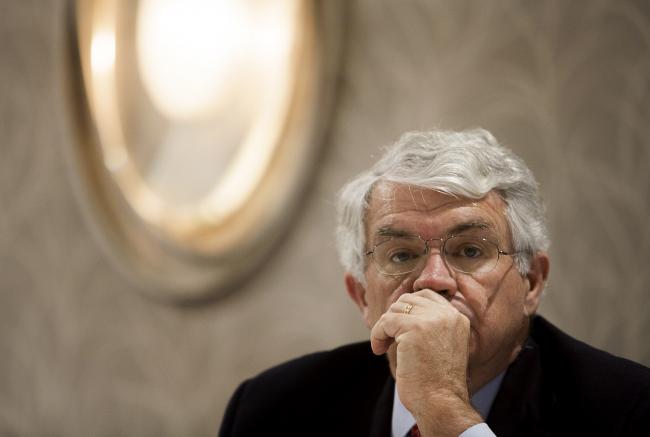(Bloomberg) -- John Taylor, the Stanford professor who is among the finalists that President Donald Trump is considering to lead the Federal Reserve, argued Thursday that faster U.S. economic growth is possible if policy makers focus on reforms that encourage investment and hiring.
“I would go back to the basic principles, that incentives matter, that tax rates matter, and apply those principles,” Taylor told an audience at the University of Wisconsin in Madison. “You want to have the supply of the economy increasing more rapidly and you can do that with new policies.”
Taylor’s remarks were likely to find an approving audience in the White House. Trump took office in January with a promise to stoke the economy’s growth rate, which has hovered a bit above 2 percent since 2010.
Taylor is reportedly being weighed alongside Fed Governor Jerome Powell, and the current chair, Janet Yellen. Trump said Monday that he was “very, very close” to announcing his nominee for the job. Yellen’s term ends in February.
Taylor compared growth and productivity growth in the U.S. over the past decade to rates before the financial crisis, when they were substantially higher. He said tax reforms and efforts to roll back regulation could help bring back those higher levels of growth.
He also made a specific reference to the post-crisis reforms of the 2010 Dodd-Frank Act, designed to make banks safer and limit risk-taking on Wall Street, which the Trump administration aims to roll back.
“As you look back at that, maybe there’s too much micro-managing of financial institutions,” he said.
Taylor, 70, is famous for having developed a formula in the early 1990s -- since known as the Taylor Rule -- for determining a central bank’s appropriate benchmark interest rate.
Though the rule’s recommendations vary depending on the assumptions about the economy that are plugged in, it has generally prescribed a rate higher than that set by the Fed for all of Yellen’s four-year term as chair.
He has frequently criticized the Fed for failing to follow, in general, a predictable strategy in setting rates, and in particular, for holding rates too low for too long after the crisis. That has made him a champion of some Republican lawmakers and controversial among economists who believe raising rates faster would endanger the current expansion.
At the moment, the rule’s standard form produces a rate around 3.75 percent, compared to the 1 percent to 1.25 percent range currently set by the Fed.
For the second time in two weeks, however, Taylor insisted his rule was not meant to be followed slavishly by policy makers.
“Things like the Taylor Rule, I’ve always emphasized, are not meant to be applied mechanically,” he said. “They were put forth as a way to think about a strategy for policy.”

